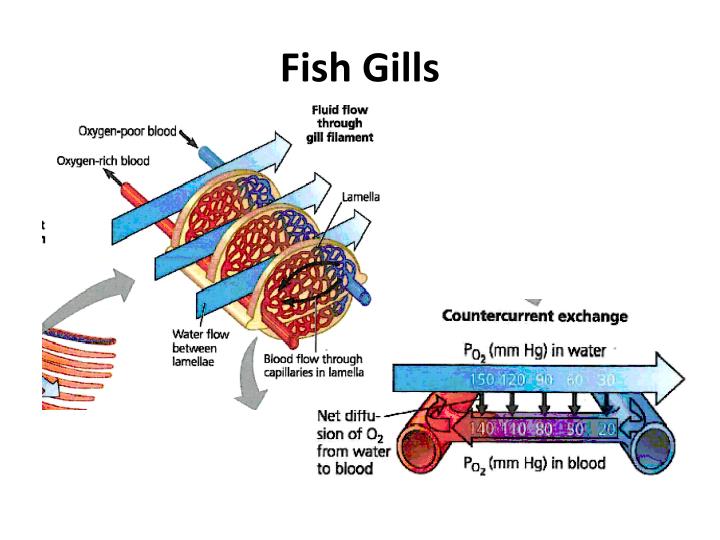Fish Gills Gas Exchange
Fish Gills Gas Exchange. The entire cardiac output perfuses the branchial vasculature before entering the dorsal aorta The gills of a fish are efficient at gas exchange as they have a large surface area with each lamellae.

Swimming continuously with their mouth open all the other responses using the gill cover (operculum) as a pump drawing the water past the gill filaments to overcome the low percentage of dissolved oxygen in water fish have two major adaptations. Water containing oxygen enters the fish through its mouth and passes out through the gills. The gill filaments are covered in lots of tiny structures called lamellae which further increase the surface are for gas exchange.
The Gill Filaments Are Covered In Lots Of Tiny Structures Called Lamellae Which Further Increase The Surface Are For Gas Exchange.
The watery environment does not require the gas exchange surface to be internal. The fish opens its mouth to let water in, then closes its mouth and forces the water through the gills and out through the operculum (gill cover). Fish demand for o2 supply and removal of co2 is lower than larger animals the gill gas exchange system limits fish to a watery environment.
Gills Have Numerous Folds That Give Them A Very Large Surface Area.
At a right angle to the filaments are the gill lamellae which increase the surface area of the gills; Gills are highly folded, giving them a large surface area and maximising the efficiency of gas exchange. A given volume of air contains 30 times more oxygen than the same volume of water.
Gills Of Fishes Consist Of Several Gill Arches On Either Side.
Fish use specialised surfaces called gills to carry out gas exchange. Influence of structure on gas diffusion rate 3. Lamellae (primary and secondary) give the gill a large surface area increasing the rte of diffusion and therefore gas exchange.
They Also Have A Short Diffusion Pathway Which Further Increases The.
Finally, fish use gills and lamellae. Along each arch there are thin plates called lamellae + on these there are gill plates where gaseous exchange happens the gills are covered by a flap called the operculum Each gill arch is attached to two stacks of filaments.
From Each Gill Arch Extend Two Rows Of Gill Filaments.
Describe or sketch the gill. Water is taken through the mouth and is forced over the gills and out through an opening on each side. This ensures there is always a steep concentration gradient for oxygen to.
Post a Comment for "Fish Gills Gas Exchange"